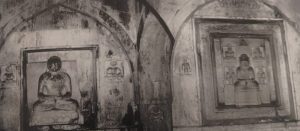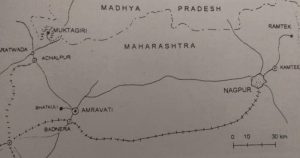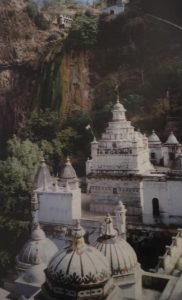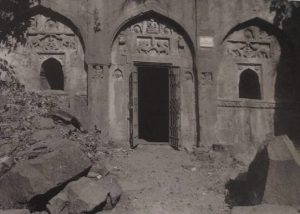Muktagir
 The origin of Muktagiri as a centre of pilgrimage goes back to a memorable occurrence in which the leading part is played by a saintly monk. This is something characteristic of many places featured in this book and confirms the traditional conviction held by Jainas that their saints of old lived up to the code of conduct laid down by Mahavira.
The origin of Muktagiri as a centre of pilgrimage goes back to a memorable occurrence in which the leading part is played by a saintly monk. This is something characteristic of many places featured in this book and confirms the traditional conviction held by Jainas that their saints of old lived up to the code of conduct laid down by Mahavira.
Being pioneers in the true meaning of the word, they were the ones who showed their followers, by their mode of living and their way of preaching, not only the revealed path to final salvation but also, and quite literally the ways to places of serene beauty which encompass within a limited space the requisites necessary to become fountain-heads of an ever-living faith. Muktagiri is such a fountain-head.
For he length of every rainy season, the vertically rising rock-formation, over- grown and with an ancient cave-temple in its eastern base, takes on the appearance of a green and reddish-brown back-cloth interwoven with gold, in front of which strings of glittering pearls purl down, seemingly descending from heaven, an awe-inspiring background for the second-last cluster of Muktagiri’s forty-two temples.
Some day long ago, the story goes, a Jaina monk, sitting outside the cave, noticed how a frog was caught and deadly hurt by the gushing streams of water falling down the rocks.
The monk knelt down to the dying creature and recited a namokar-mantra (the most holy  hymn of the Jainas) whereby the frog was instantaneously reborn as a heavenly maiden who, out of gratitude, made a rain of pearls fall down on that spot of ground which has become known by the name of ‘Muktagiri’, meaning Hill of Pearls.
hymn of the Jainas) whereby the frog was instantaneously reborn as a heavenly maiden who, out of gratitude, made a rain of pearls fall down on that spot of ground which has become known by the name of ‘Muktagiri’, meaning Hill of Pearls.
Map of NE Maharashtra showing Muktagiri, Karanja and Ramtek The Adinatha Temple at Bhatkuli is another site visited by Digambara pilgrims.
Part view of Muktagiri, the Hill of Pearls’. A perfect blend of nature and architecture. The entrance to the cave (ill. 134) lies behind the trees on the left. On wet days in the rainy season a stream of water falls down the vertical rock.
 Muktagiri. Jaina Cave. The vaulted façade and the interior (below) are reminiscent of wooden structures. The black patches across the eyes of the two seated Jinas are disfigurations caused by the moist conditions in the cave. Approximately late tenth century.
Muktagiri. Jaina Cave. The vaulted façade and the interior (below) are reminiscent of wooden structures. The black patches across the eyes of the two seated Jinas are disfigurations caused by the moist conditions in the cave. Approximately late tenth century.